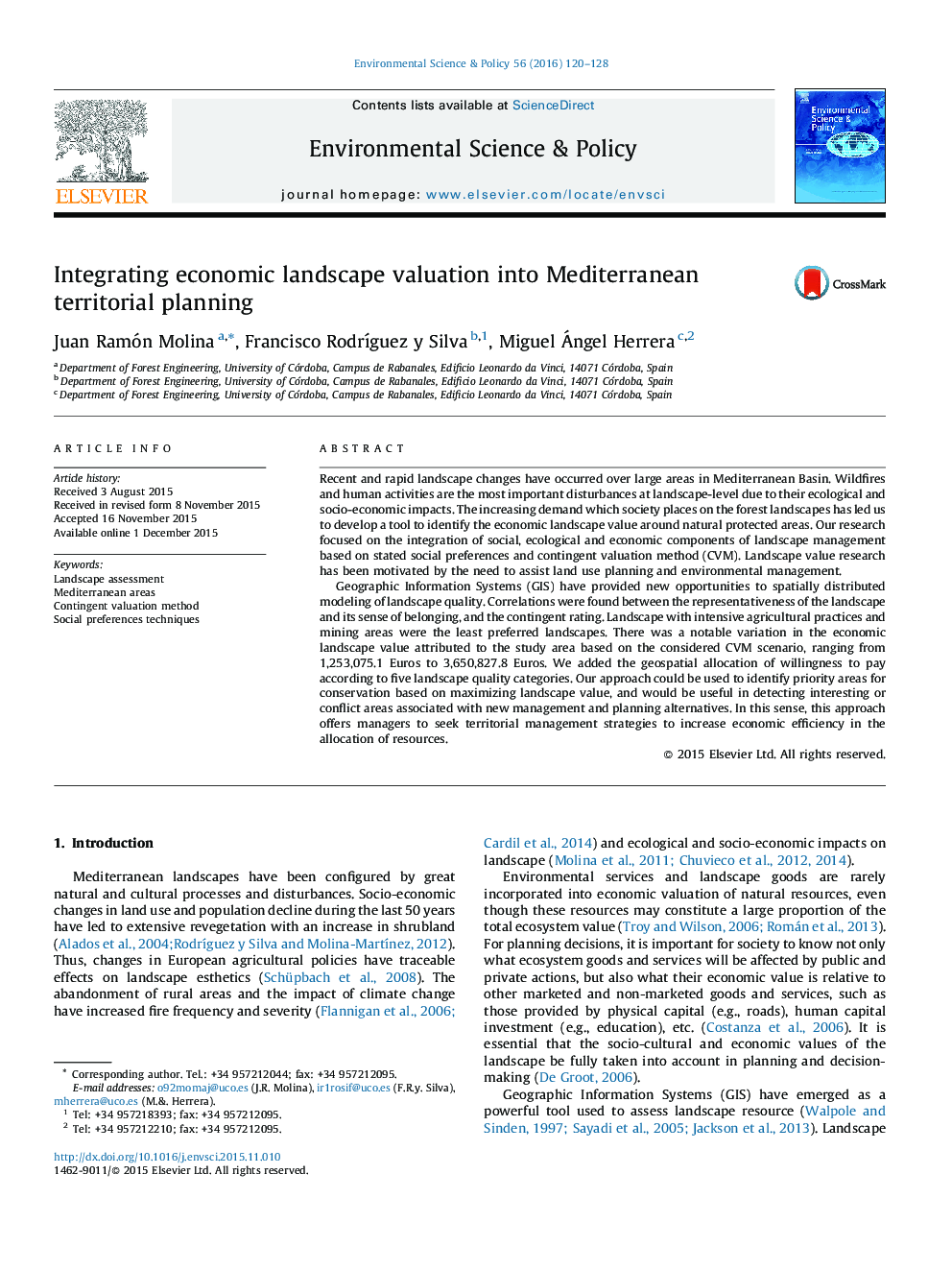| Article ID | Journal | Published Year | Pages | File Type |
|---|---|---|---|---|
| 7467110 | Environmental Science & Policy | 2016 | 9 Pages |
Abstract
Geographic Information Systems (GIS) have provided new opportunities to spatially distributed modeling of landscape quality. Correlations were found between the representativeness of the landscape and its sense of belonging, and the contingent rating. Landscape with intensive agricultural practices and mining areas were the least preferred landscapes. There was a notable variation in the economic landscape value attributed to the study area based on the considered CVM scenario, ranging from 1,253,075.1 Euros to 3,650,827.8 Euros. We added the geospatial allocation of willingness to pay according to five landscape quality categories. Our approach could be used to identify priority areas for conservation based on maximizing landscape value, and would be useful in detecting interesting or conflict areas associated with new management and planning alternatives. In this sense, this approach offers managers to seek territorial management strategies to increase economic efficiency in the allocation of resources.
Related Topics
Physical Sciences and Engineering
Energy
Renewable Energy, Sustainability and the Environment
Authors
Juan Ramón Molina, Francisco RodrÃguez y Silva, Miguel Ángel Herrera,
